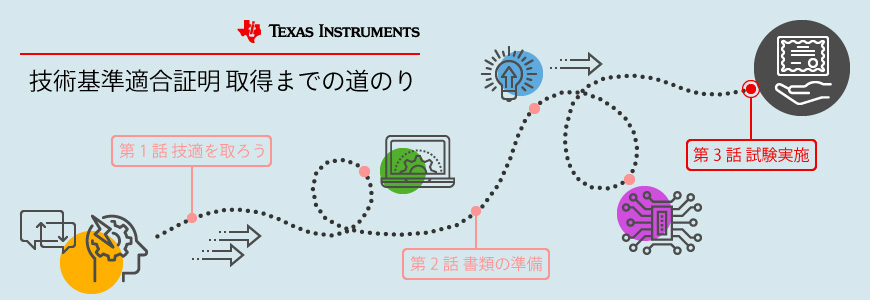In Episode 2, "Preparing Documents," we introduced the documents and materials required for the application. This time, we will introduce the software and hardware prepared for the test of Technical Regulations Conformity Certification (hereinafter referred to as Technical Conformity), and the state of the test conducted by TÜV Rheinland Japan Co., Ltd.
The road to technical standard conformity certification Episode 1 "Let's get technical standards"
The Road to Technical Regulations Conformity Certification Episode 2 "Preparing Documents"
The Road to Acquiring Technical Standards Conformity Certification Episode 3 “Examination”
Prepare the hardware first
You cannot output radio waves from the antenna until the evaluation board is technically certified. Therefore, we will modify the RF input/output from the antenna to the connector. At the time of purchase, it is connected to the antenna with a capacitor, so remove this capacitor. And connect with the pad on the connector side.
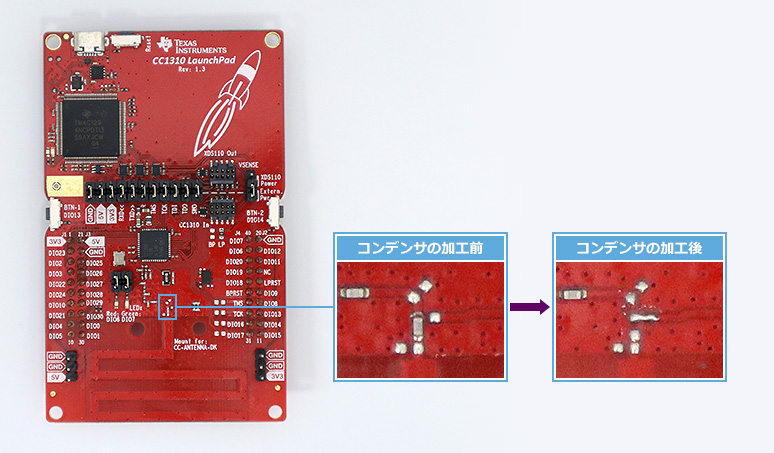
All boards to acquire technical suitability must be remodeled, so we remodeled the 25 boards we applied for this time at once.
After modification, it will be used together with the SMA conversion cable as shown in the figure below.
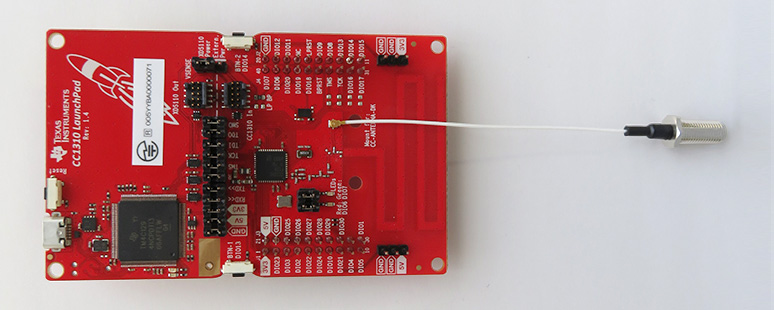
Determine wireless specifications and prepare software
Next, prepare the software.
Before creating a program, the radio specifications must be decided. This time, we used the following wireless specifications.
Wireless specification
| center frequency | 922.5MHz, 925.1MHz, 927.7MHz |
| Occupied bandwidth | 400 kHz |
| communication speed | 20kbps, 50kbps, 100kbps |
| Modulation method | 2GFSK |
| Transmitting power | 12 dBm |
| Communication format | *Uses CC1310 basic packet format
|
Implement the functions required for the technical suitability test
As a communication function, the following functions necessary for the technical suitability test will be implemented.
| continuous transmission |
|
| packet transmission |
|
| packet reception |
|
In addition, these functions and detailed parameters are displayed via UART and can be changed using Launchpad button operations.
Compliant with ARIB STD-T108, a standard for radio equipment
ARIB STD-T108 is a standard defined by the Association of Radio Industries and Businesses (ARIB). The formal name of the standard is "Radio equipment for 920MHz band telemetry, telecontrol and data transmission". When using the 920MHz band, it is necessary to develop according to this standard.
Therefore, the software is designed to support the above specifications and ARIB STD-T108 based on the SimpleLink SDK for CC1310 provided by Texas Instruments (hereafter referred to as TI).
The SimpleLink SDK includes sample programs for packet transmission/reception, continuous transmission, and carrier sensing. Since each is prepared individually, merge these and make minor corrections. Fortunately, the sample program already includes UART display processing and button operation processing, so it was very easy to prepare.
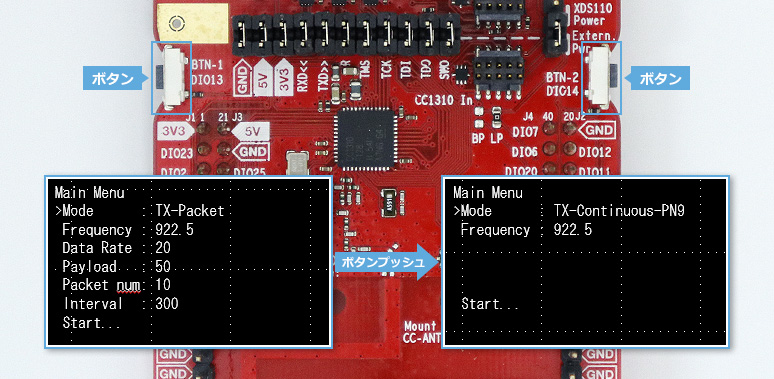
To the skill aptitude test
Now that we have all the hardware, software, and documentation, the final barrier is TÜV Rheinland Japan.
It will be a test at Co., Ltd. As explained in episode 1, certification and examination for various standards, including the Radio Law, must be performed by a registered certification body registered by the Ministry of Internal Affairs and Communications.
Before the exam, we hold a meeting about the content of the technical suit and extract exam samples. For sample extraction, we will randomly select 2 units to be tested from the 25 Launchpads prepared. In this test, No.08 and No.12 were used.
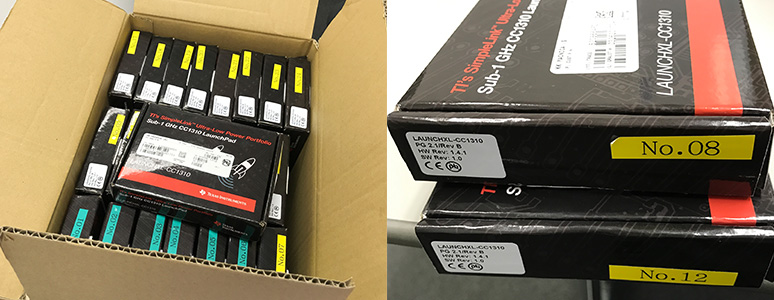
The test room will be held in such a place.
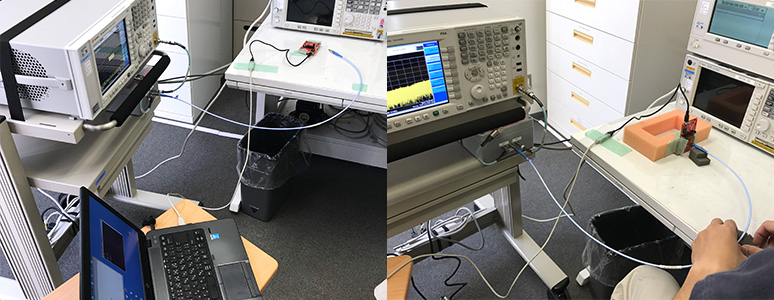
There are 8 test items for technical suitability
The test items are the following eight items for each frequency (three frequencies this time).
- frequency deviation
- Occupied bandwidth
- Intensity of spurious or unwanted emissions
- Antenna power deviation
- Adjacent channel leakage power
- Limitation of secondarily emitted radio waves, etc.
- transmission time limiter
- Carrier sense function
(Source: http://www.soumu.go.jp/main_content/000455446.pdf)
At first, we tested the transmission. The test progressed smoothly, including the measurement of transmission output, frequency deviation, spurious emission by continuous transmission, and transmission pause time by packet transmission, but a problem occurred along the way.
A problem occurred in the carrier sense function test...
In the carrier sense test, a pulse signal generator is used to transmit an interfering wave that enables transmission and an interfering wave that disables transmission, and checks whether the tester is transmitting. Normally, if you input a non-transmittable interfering wave, it should not be transmitted from the tester, but it is!
I hurriedly checked the source code. When I traced the source code, the cause was that the receive filter in the receive settings for carrier sensing was set to the band when receiving packets, and the entire channel was not measured.
Since we found the problem, we hurriedly corrected the source code, wrote the corrected binary to the test machine, and tried again. Even if an interfering wave is input to both ends of the channel, we can confirm that it does not transmit, so we were able to pass the carrier sense function test.
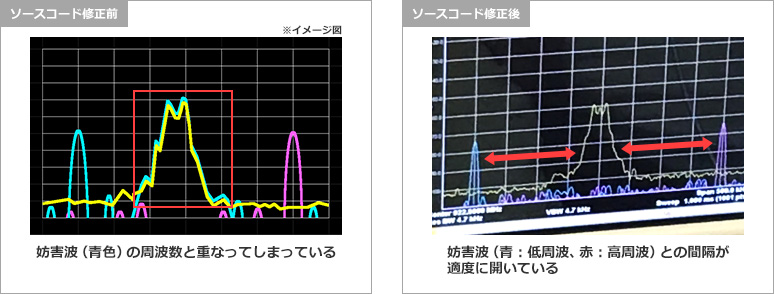
Finally, we conducted a limit test on the secondary emission of radio waves, etc., and successfully completed all the tests. This time, we narrowed down the frequency band, so we started in the morning and finished in about half a day. If the frequency band is wide, the test may take a little longer.
All you have to do is submit the application documents and Launchpad to TÜV Rheinland Japan K.K.
Received technical standard conformity certificate
I was successfully authenticated and received my certificate.
With this, you will be able to carry out various Sub-GHz tests with a Launchpad that actually has the Technical Conformity Mark affixed!
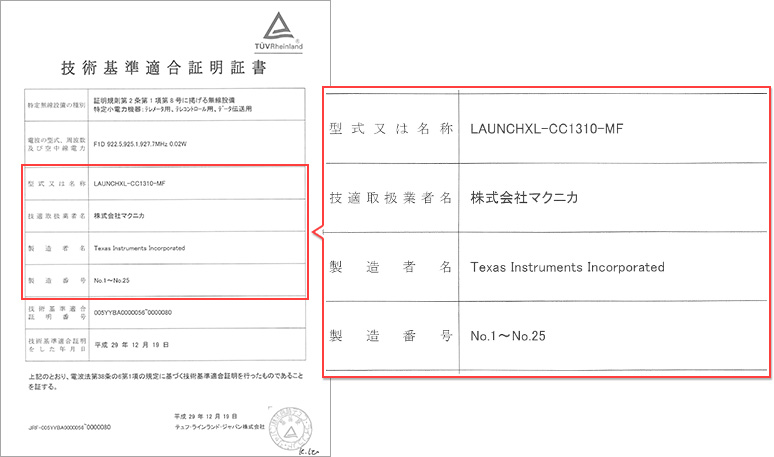
You want to measure how far you can communicate outdoors, right?
This is the end of the technical suit acquisition series, but since I was able to use it outside, I experimented in Shin-Yokohama and Odaiba. Be sure to check out this series of experiments!
Contact Us
If you are looking for detailed information on TI's development kits introduced in this article or Sub-GHz compatible products, please contact us here.
Related information
Click here for recommended articles/materials
The road to technical standard conformity certification Episode 1 "Let's get technical standards"
The Road to Technical Regulations Conformity Certification Episode 2 "Preparing Documents"
The Road to Acquiring Technical Standards Conformity Certification Episode 3 “Examination”
Click here for recommended seminars/workshops
Wireless Seminar for Beginners - First wireless product starting with TI - <free>
Click here to purchase products
LAUNCHXL-CC1310
*Since this evaluation board has not acquired domestic technical certification, please use it at your own discretion.

